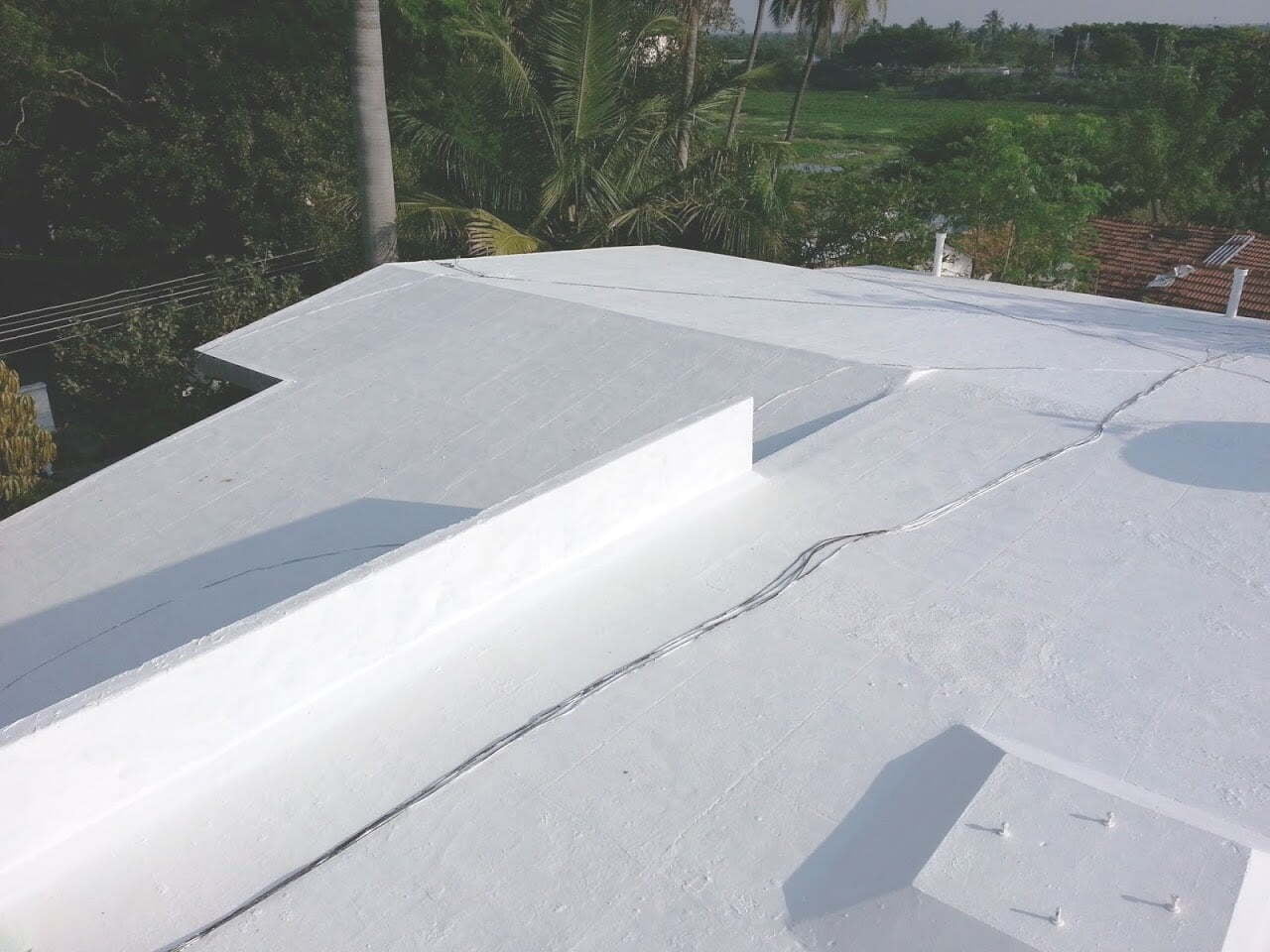Green Roofs and Cool Roofs have become a very important component of sustainable urban development within the last 30 years. Growing environmental awareness and the striking economical and ecological advantages are the driving forces for this great success. Cool Roofs specially are growing at a rapid pace with plenty of research dollars being spent on improving the performance of cool roof products.
At present, Green Roofs and rooftop gardens can be found in most big cities around the world, benefiting the urban environment and their inhabitants. Green roofs are yet to catch on in a big way in India mainly due to the higher upfront costs and the common issues surrounding lack of water or maintenance personnel. One hopes this scenario will change soon with coming in of low cost natural waste water treatment and reuse systems along with automated irrigation.
Green roofs provide unparalleled benefits
Most building design professionals around the world have hugely underestimated the value green roofs add to the environment. Especially in warmer countries like India a well irrigated green roof can provide much higher savings in energy compared to a cool roof (or even an insulated roof in non air-conditioned buildings). The premier green roof industry association, 'Green Roofs for Healthy Cities’ has listed all the benefits of green roofs:

Private Benefits
- Energy efficiency - Through greater insulation offered by green roofs
- Improved health and well being - The reduced pollution and increased water quality that green roofs bring can decrease demands on the health care system.
- Urban agriculture - Green roofs can be used to setup small organic food gardens
- Roof durability - By preventing large temperature variations between climates roofs are less likely to crack.
- Fire retardation - Since green roofs have a much lower burning heat load in comparison to conventional roofs
- Reduction in electromagnetic radiation - Green roofs are known to reduce the electromagnetic radiation from wireless devices by 99.4% (Herman 2003)
- Noise reduction - Green have excellent noise attenuation and can reduce noise penetration by up to 40 decibels
- Enhanced marketability - Green roofs add value since they are the most identifiable feature of a green building.
Public Benefits
- Increased biodiversity - Green roofs can sustain a variety of plants and invertebrates, and provide a habitat for various bird species.
- Aesthetic Improvement - Green Roofs are visually enhancing the quality of life in the cities.
- Waste diversion - By prolonging the service of the HVAC equipment through decreased use.
- Storm water retention - A 6 inch green roof can hold up to 50 mm of rainfall. It also delays the run off reducing the pressure on storm-water drains.
- Urban heat island effect - Through the daily evapotranspiration plants cool the city in the hot summer months.
- Improved air quality - The plants and soil on green roofs can capture airborne pollutants, atmospheric deposition and filter noxious gases.
- New amenity space - Green roofs can positively affect the urban environment by increasing amenity and green space.
The working of a green roof
Green Roofs are comprised of a number of different layers all of which have different and related functions that have to work in concert with each other to avoid costly repairs in the future. The green roof at minimum must consist the following layers to be effective, durable and safe:
- Concrete finish with gradient for water flow
- High quality waterproofing
- Root barrier
- Drainage layer
- Geotextile filter
- Light weight & water retaining growing medium
- Plants (grass, sedums, aliums, herbs etc)
No green roof is maintenance free. It requires regular irrigation and periodic trimming, weeding, fertilizing, termite checks etc. The regular irrigation actually provides radiant cooling to the floor below and evaporative cooling to the surrounding spaces. Hence it is important to identify a sustainable water source like treated used water or harvested rainwater so that the green roof can be kept moist at most times without compromising the quantity of fresh water available to the building occupants.
The most common question people ask about green roofs is 'Does it not leak?’. Well, absolutely not, provided the roof has been designed and installed by professionals who understand the interactions the green roofs' have with the building throughout its life. The waterproofing ensures that no moisture penetrates the roof surface. Even if the waterproof layer fails, it may not necessarily be a cause for concern in concrete structures with a good gradient. In a green roof all moisture retention and organic activity is happening an inch above the surface of the roof, separated by the drainage layer. So essentially the root barrier and the green roof are separated by an air gap which ensures any additional water simply flows away through this layer just like it would in a conventional roof. In fact there is lesser possibility of moisture penetration through a green roof as the waterproof layer lasts longer since it is well protected from the fluctuating environment outside. Building owners should be more worried about moisture penetration if they do not have a green roof installed as opposed to having one.
What is a Cool Roof ?A cool roof reflects and emits the sun’s heat back to the sky instead of transferring it to the building below. “Coolness” is measured by two properties, solar reflectance and thermal emittance. Both properties combined together gives us the product's Solar Reflective Index (SRI). The SRI is measured from 0 to 100 and the higher the value, the “cooler” the roof. Any roof with an SRI of above 80 is considered by most building codes as a Cool Roof.
What are the Benefits of a Cool Roof?
A Cool Roof can

- Increase occupant comfort by keeping the building cooler during hot summer months.
- Cut costs
- by reducing the need for air-conditioning, and extending the life of cooling equipment. Studies have shown typical cooling energy savings of 10-30% in cooling energy and an extension in the life of cooling equipment.
- by decreasing roof maintenance costs (cool roofs are expected to last longer than the average roof).
- by reducing the need for air-conditioning, and extending the life of cooling equipment. Studies have shown typical cooling energy savings of 10-30% in cooling energy and an extension in the life of cooling equipment.
- Address air pollution and Global Warming concerns by lowering CO2 and other emissions associated with fossil fuel-generated electricity used for air-conditioning.
- Reduce the “Urban Heat Island Effect” by reflecting heat back to the atmosphere. An Urban Heat Island occurs when a city is hotter than the surrounding rural areas due to dark surfaces, like roofs and roads that absorb heat from the sun, and less shading vegetation.
- Help with Green Building Compliance since a growing number of building codes have cool roof requirements.
Cool Roofs are also fairly economical and are well suited for retrofitting on existing buildings. Even for buildings that do not face too much heat gain issues from the roof, it is usually not a bad idea to use cool roof coatings to carry out the occasional roof maintenance. Most Cool Roof coatings last at least 5 years and provide an added benefit of waterproofing as well, which helps improve the durability of the roof.
Drawbacks of Cool Roof
Some of the drawbacks we noticed after installing a large Cool Roof at our home were that soon after installation the roof reflectivity was too high during the day making it very uncomfortable to the eyes. This excess reflectivity goes away in a few weeks as dust settles on the roof. But the dust also reduces the performance of the roof because the dust particles heat up quickly and the reduced reflectivity allows for lot of the heat to conduct through the coating into the slab below. A cool roof has to be kept fairly clean for its performance to remain intact. In many cases, this rarely happens because the roof is the most ignored area of most buildings.
Green roofs on the other hand provide a lot more benefits and also encourage occupants to use the roof for recreational purposes. If cost is no bar and ongoing maintenance is not an issue then a green roof should always be the first choice for any project team.

